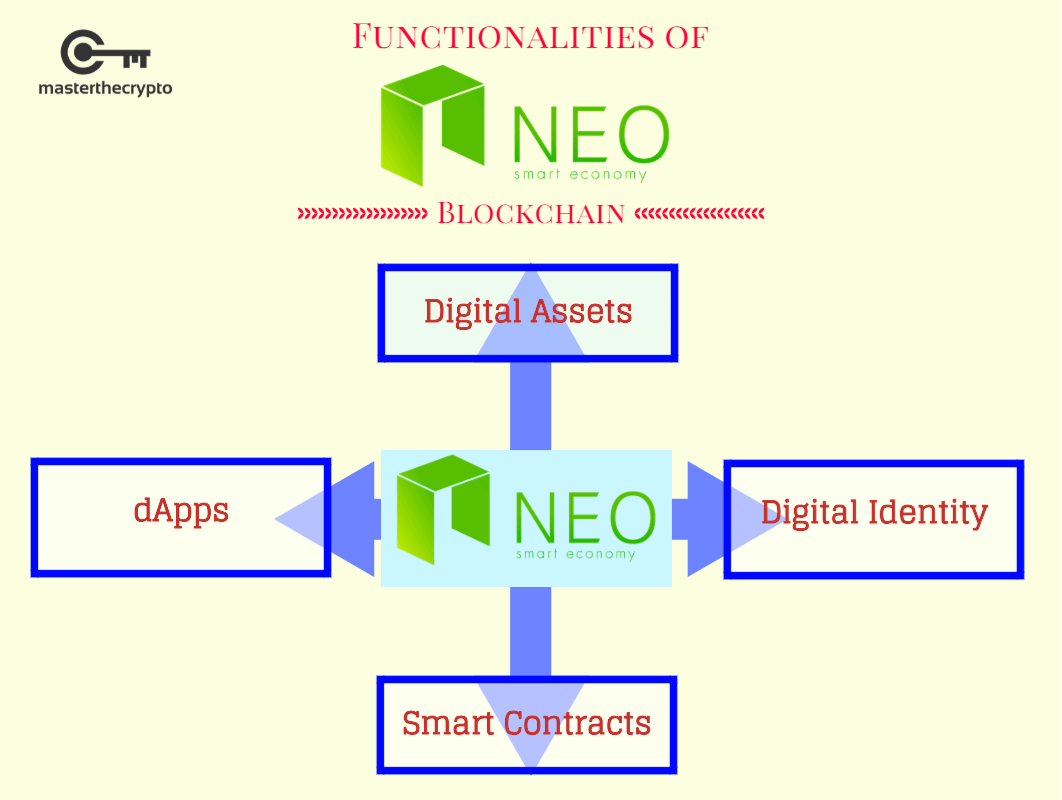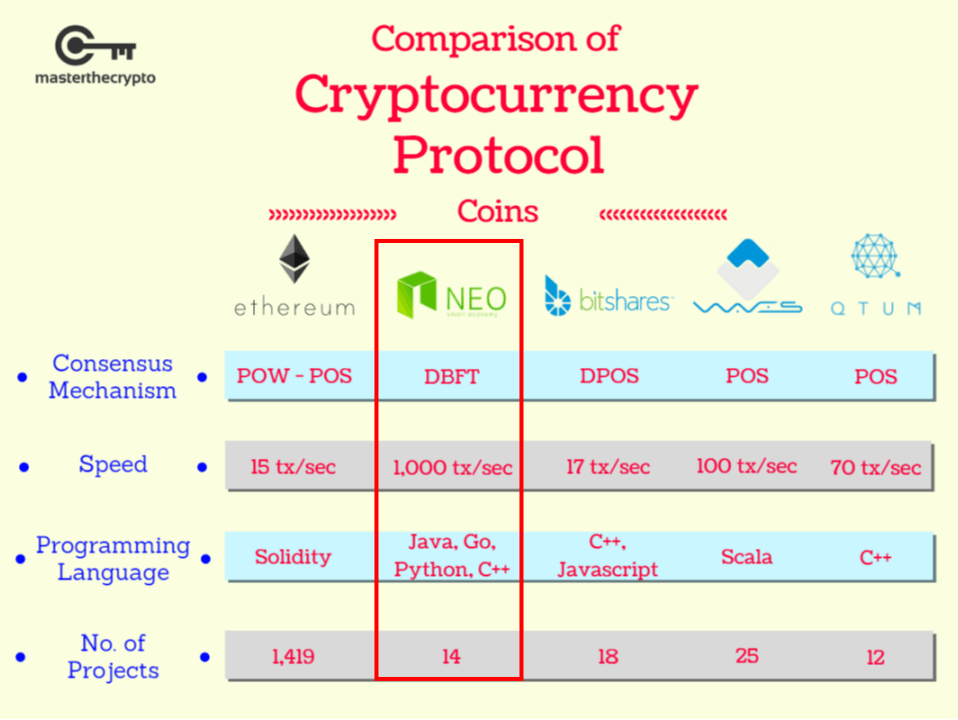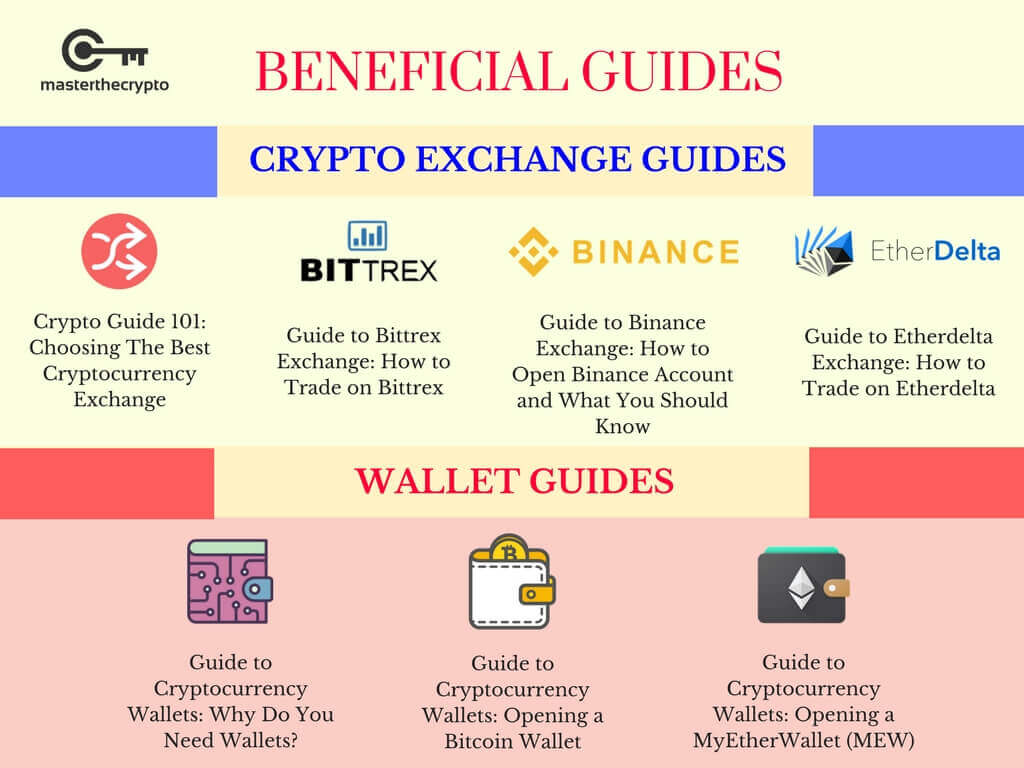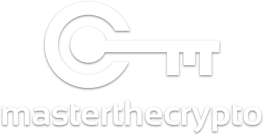This article is a guide to NEO blockchain protocol, exploring various protocol-level characteristics. This is the second article in the Guide to Blockchain Protocols: Comparison of Major Protocol Coins series.

Neo began life as AntShares (ANS) in 2014. Founded by Da Hongfei and Erik Zhang, Antshares has been referred to as ‘China’s first blockchain platform’. Da and Erik founded OnChain – a venture-backed company that provides blockchain-based financial services in 2016 – in response to growing interest in AntShares and a need for blockchain solutions that meet the requirements of both government regulators and private companies. In 2017, AntShares was rebranded as Neo.
It’s certainly the case that Chinese regulation can have far-reaching effects on the overall cryptocurrency markets and development. Neo is extremely vulnerable to regulatory pressures, but it is well-positioned to cooperate and work within the Chinese regulatory system.
(Read also: Crypto ICO vs. Stock IPO: What’s the Difference?)
Transforming Real-World Assets into Digital Assets
While NEO and Ethereum have numerous similarities, NEO's focus is on the smart economy. Here is a description of what the smart economy entails, as stated in their whitepaper:
“Antshares is a decentralized and distributed ledger protocol that digitalizes real-world assets into digital ones, enabling registration, depository, transfer, trading, clearing and settlement via a peer-to-peer network. Antshares uses e-contracts to keep record transfers of digital assets. In Antshares, digital tokens generated by e-contracts function as a general underlying data that could be used for recording titles and assets like equities, creditor’s claims, securities, financial contracts, credit points, bills and currencies, and can be applied for equity crowdfunding, equity trading, employee stock ownership plans, peer-to-peer financing, loyalty programs, private equity funds, supply-chain financing, etc. The mission of the Antshares is about digital assets for everyone. Bitcoin wants to create a financial system parallel to the existing ones, whereas Antshares is about building a financial system bridging the real-world assets.”
This is similar to Ethereum, but with one fundamental difference; Ethereum's whitepaper focuses on being an abstract, foundational layer for other projects to build their DAPPS on top of. Similar to an operating system or coding language, it abstracts away most of the work required to build and deploy on top of a blockchain. NEO’s focus is more geared towards the components in a smart economy; asset management and exchange.
(See more: Coins, Tokens & Altcoins: What’s the Difference?)
NEO Functionalities

- Digital Assets: NEO aims to convert traditional assets into digital ones using smart contracts. These digital assets will be decentralized and will be protected by law using digital certificates on the blockchain, which in turn, will guarantee trust.
- Digital Identity: NEO will enable the creation of identity information of organizations, individuals, and entities in electronic form. These identities will be usable via multi-factor authentication mechanisms such as facial recognition, fingerprints, voice recognition, and SMS.
- Smart Contracts: Unlike smart contracts programmed in the Ethereum blockchain, developers need not learn a new smart contract language. If you are a developer using C#, Java, or any other mainstream programming language, you can get started right now to code your smart contracts. NEO’s Universal Lightweight Virtual Machine (NeoVM) has the advantage of high certainty, high concurrency, and high scalability for smart contracts created on the blockchain.
- DApps: NEO’s platform is equipped with various developmental tools and mechanisms to support the creation of decentralized applications. Some of the examples of DApps that are currently being created on the NEO blockchain include smart funds, AI-assisted legal smart contracts, and decentralized exchanges.
Here is a detailed look at the key characteristics of NEO:

Consensus Mechanism
The consensus algorithm of NEO’s blockchain is Delegated Byzantine Fault Tolerance (dBFT). In a dBFT system, consensus nodes are chosen by NEO holders to generate blocks and validate transactions. These nodes are required to meet definite performance requirements and must simultaneously maintain a minimum threshold of NEO tokens. The validation process is as follows:
- The block – and all transactions within it – are validated only when two-thirds of all nodes within the NEO network are in consensus.
- Another consensus node will be voted in and assume the responsibility of the block-generation process if there is no consensus within NEO’s nodes.
BFT gets its name from the Byzantine Generals Problem, a scenario whereby the Byzantine army has multiple separate divisions surrounding an enemy city, and they have to all agree on a common plan to attack or retreat. All, or at least nearly all, must perform the same action or they will risk complete failure. The catch is, the generals of each division can only communicate with each other individually via messenger, and there may be traitorous generals who send different information to different generals.
An advantage of the dBFT system is that it consumes relatively fewer resources and can support greater numbers of transaction volumes. However, it comes at the cost of centralization, where trust must be given to consensus nodes to act within the network’s best interest.
(See also: Guide to Verifying Cryptocurrency Transactions)
Transaction Speed
NEO is the fastest blockchain out of all the major protocols, achieving speeds of up to 1,000 transactions per second! A faster transaction speed is possible due to NEO’s streamlined dBFT mechanism. However, higher speeds come at a cost of higher centralization. This is evident in the fact that only a small group of miners – called consensus nodes – have the power to mine transactions. Nevertheless, NEO’s fast transaction speeds would be able to accommodate further expansion of NEO’s smart economy, without concerning themselves on the issue of scalability that most blockchains are experiencing now. (Read more: Guide to Ethereum Sharding: Ethereum’s Scalability Solution)
Programming Language
Neo does not have a native programming language that Ethereum has. The disadvantage of that the functionalities of NEO smart contracts aren’t as versatile and flexible as Ethereum. The advantage, however, is that it is much easier for developers to engage in smart contracts development since NEO’s programming language uses a variety of mainstream computing language such as Java, Python and C++. This frictionless integration with the existing developer ecosystem lowers the barriers of entry to millions of developers keen on exploring blockchain technology and smart contracts functionalities. NEO’s virtual machine (NEOVM)is highly scalable and concurrent.
Traction
NEO has 14 projects currently built on its blockchain, a relatively low number compared to other major protocols. There have been cases where the NEO blockchain encountered outages due to technical inconsistencies, which may have hindered NEO’s progress. However, with several planned enhancements in store and a recent upgrade that enable smart contract integration with web interfaces, NEO may have a chance to be a contender in the space.
(Read also: ICO Investing Strategy: Making Money off ICOs)
Beneficial Resources To Get You Started
If you're starting your journey into the complex world of cryptocurrencies, here's a list of useful resources and guides that will get you on your way:

Trading & Exchange
- Crypto Guide 101: Choosing The Best Cryptocurrency Exchange
- Guide to Bittrex Exchange: How to Trade on Bittrex
- Guide to Binance Exchange: How to Open Binance Account and What You Should Know
- Guide to Etherdelta Exchange: How to Trade on Etherdelta
- Guide To Cryptocurrency Trading Basics: Introduction to Crypto Technical Analysis
- Cryptocurrency Trading: Understanding Cryptocurrency Trading Pairs & How it Works
- Crypto Trading Guide: 4 Common Pitfalls Every Crypto Trader Will Experience
Wallets
- Guide to Cryptocurrency Wallets: Why Do You Need Wallets?
- Guide to Cryptocurrency Wallets: Opening a Bitcoin Wallet
- Guide to Cryptocurrency Wallets: Opening a MyEtherWallet (MEW)
Read also: Guide to Margin Trading & Derivatives: Are Cryptocurrency Exchanges Really Manipulating? and Guide To Cryptocurrency Trading Basics: Do Charts & Technical Analysis Really Work?
Get our exclusive e-book which will guide you on the step-by-step process to get started with making money via Cryptocurrency investments!
You can also join our Facebook group at Master The Crypto: Advanced Cryptocurrency Knowledge to ask any questions regarding cryptos!

I'm Aziz, a seasoned cryptocurrency trader who's really passionate about 2 things; #1) the awesome-revolutionary blockchain technology underlying crypto and #2) helping make bitcoin great ‘again'!

